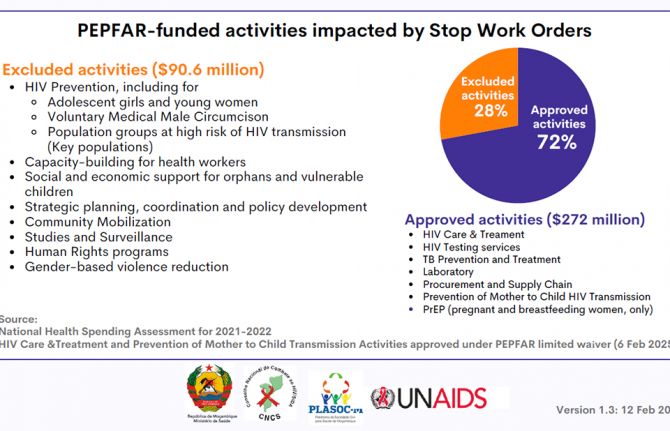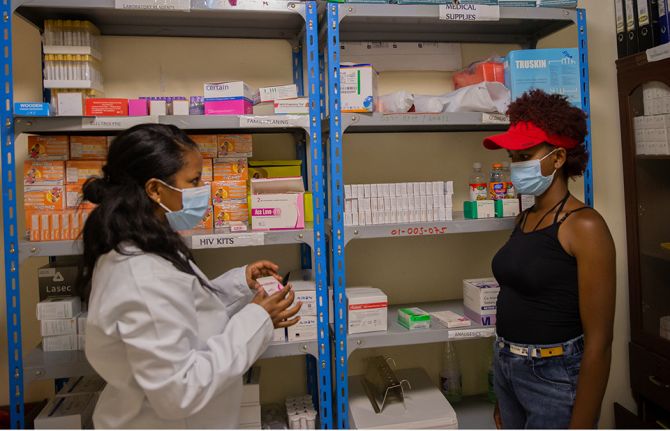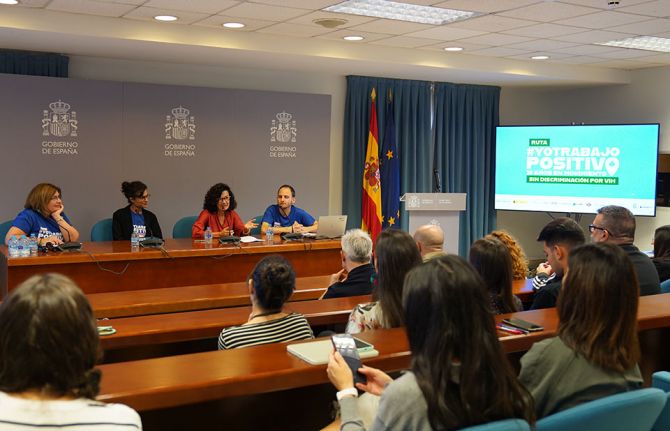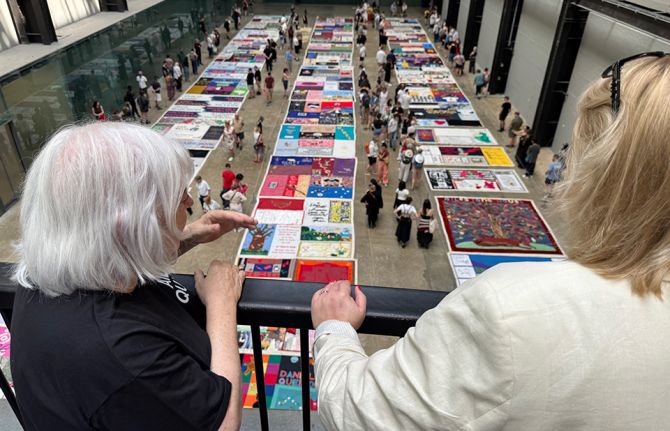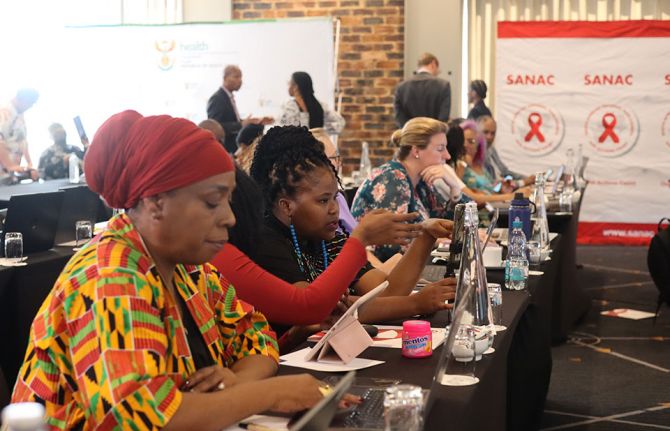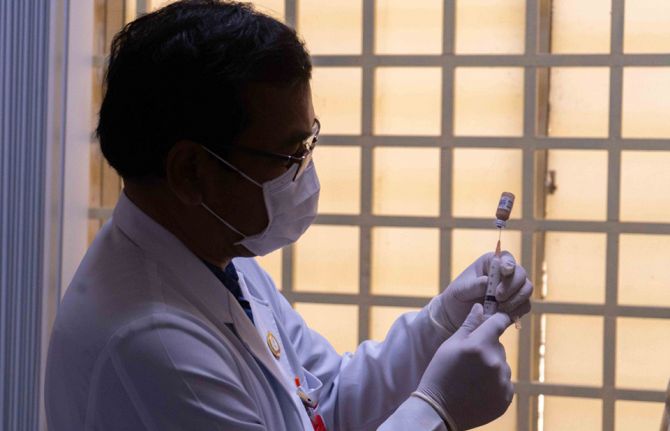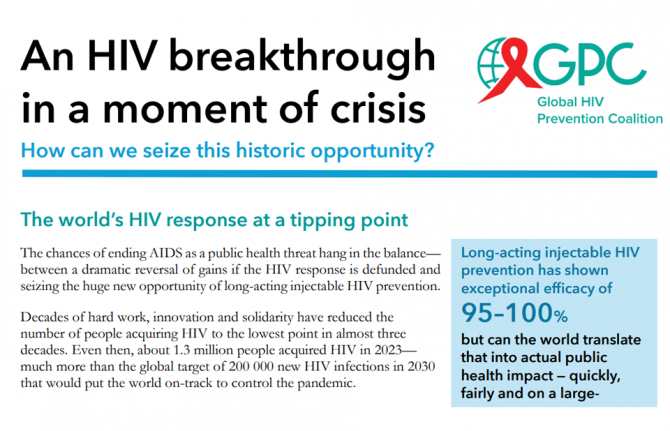
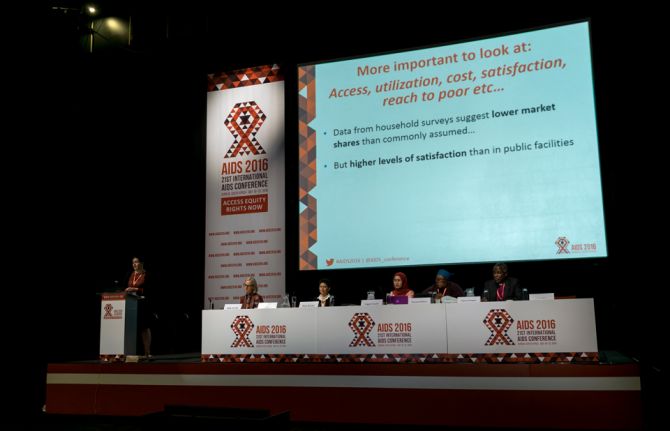
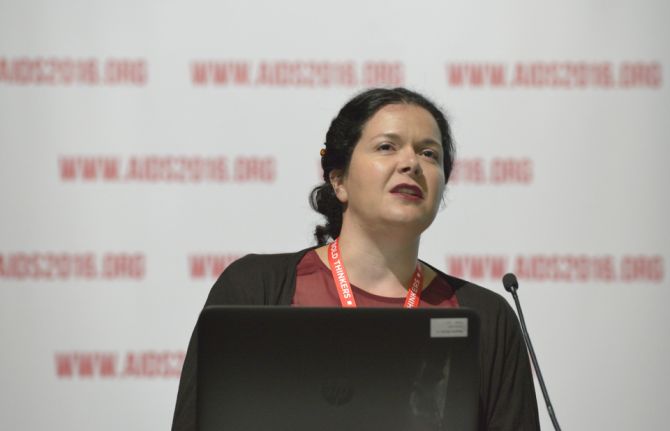
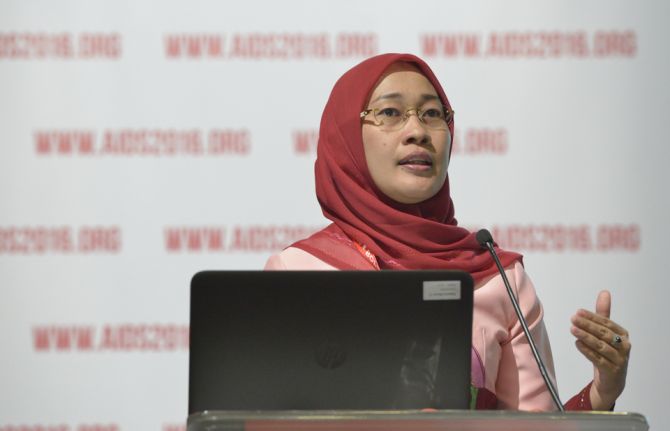
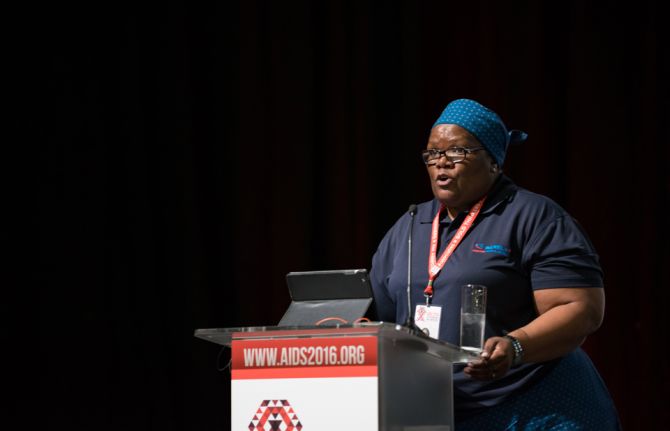
Update
The challenges of faith responses to the AIDS epidemic
20 July 2016
20 July 2016 20 July 2016A strong faith response is critical to achieving the Fast-Track Targets by 2020 and to ending AIDS by 2030. Yet effective mobilization of that response faces many unique challenges. Those challenges were the subject of a session at the 21st International AIDS Conference, being held in Durban, South Africa.
Gathering data about faith activities is often very difficult, especially in the context of the AIDS epidemic, where there are often perceptions of conflict between religious values and health priorities. Progress has been made, however, as reported in a special edition of the Lancet on faith and health care.
Presentations were made on two of the papers in the Lancet special edition: one on data and one on controversies. It was noted that faith community responses do not always match international strategy and that faith is only one of many factors contributing to issues such as child marriage, female genital mutilation, violence against women, the provision of sexual and reproductive health services and stigma related to HIV. Both speakers agreed on the importance of viewing faith-based initiatives as part of an integrated health-care system.
Issues from a community perspective were also addressed. The process of raising awareness of HIV using Muslim principles and religious texts to explore the issues was described, as was the vital role that religious leaders play in reducing the effects of stigma.
The Anglican Archbishop of Cape Town described the response of his church to reports of “corrective rape,” which led him to launch initiatives against gender-based violence and human trafficking. He noted that the data show that HIV prevalence among survivors of sexual violence is much higher than among the general population.
As the AIDS epidemic has progressed through history, the importance of the faith response has become increasingly apparent. Luiz Loures, Deputy Executive Director of UNAIDS, described a recently launched joint initiative of UNAIDS and the United States President’s Emergency Plan for AIDS Relief aimed at strengthening the faith response to HIV, with the hope that faith-based initiatives will be major contributors to the community-based responses that are critical to ending the AIDS epidemic.
Quotes
“There is great urgency today; we have a narrow window to control the AIDS epidemic to see the end of AIDS. At least 30% of HIV service delivery needs to be delivered by communities, and the faith community has a critical role to play in delivering those services and in addressing stigma and discrimination.”
“There is an evidential black hole around the role of religious organizations in health care generally, and in the AIDS response specifically. More research is needed to fill the critical gaps.”
“Religious communities are the tipping point for successful resolution of many development challenges, including HIV.”
“In Indonesia, responding to HIV is seen as a collective responsibility. We need to make a great effort to understand and respond to HIV through the lens of our religious texts.”
“We are all created in the image of God. We must develop life-giving theologies.”
“HIV has profoundly challenged us as a church. Human dignity, especially the dignity of women, is non-negotiable.”
Related

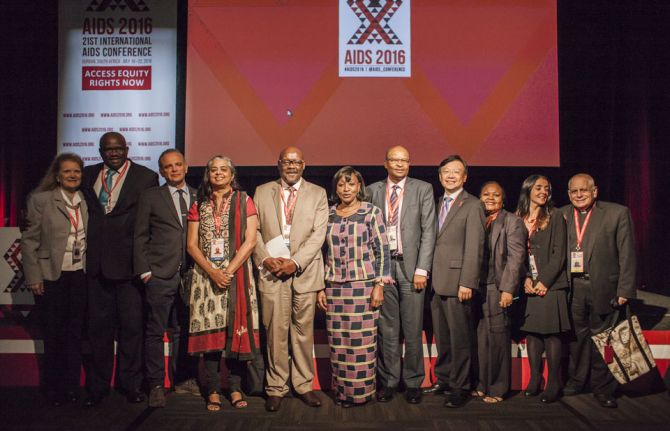


Update
New global push to close paediatric HIV treatment gap launched
20 July 2016
20 July 2016 20 July 2016Leading stakeholders involved in paediatric HIV treatment joined together in a special session on 19 July at the 21st International AIDS Conference, being held in Durban, South Africa, to launch an urgent global push to end paediatric AIDS by 2020. In particular, the session focused on reaching the global target of at least 1.6 million children accessing antiretroviral therapy by 2018.
Sustained gains in preventing new HIV infections among children have laid the groundwork to end paediatric AIDS at least a decade sooner than the global target for the epidemic as a whole. However, to end paediatric AIDS, prevention efforts will need to be matched by an equally robust effort to address the treatment needs of children living with HIV.
While children (aged 0–14 years) accounted for 5% of people living with HIV in 2015, they represented 10% of all AIDS-related deaths. Half of all children who acquire HIV perinatally die by their second birthday unless they receive antiretroviral therapy, with peak mortality occurring at 6–8 weeks of life.
Participants in the session included Raymonde Goudou-Coffie, Minister of Health and Public Hygiene of Côte d’Ivoire, Molotsi Monyamane, Minister of Health of Lesotho, David Parirenyatwa, Minister of Health and Child Welfare of Zimbabwe, and high-level representatives of the United Nations Children’s Fund, the World Health Organization, the Elizabeth Glaser Pediatric AIDS Foundation, ELMA Philanthropies and Caritas Internationalis.
The session resulted in an urgent call to increase political commitment for paediatric HIV treatment, rapid scale-up of point-of-care diagnostic tools for children, intensifying testing efforts for older children, strengthening service delivery and patient monitoring for mothers and their infants and expanding the array of child-appropriate antiretroviral medicines. The renewed global push to close paediatric treatment gaps support the AIDS-free component of the Start Free, Stay Free, AIDS Free framework launched by UNAIDS and partners.
Quotes
“Lesotho’s adoption of a test-and-treat approach in 2016 is the latest in a series of supportive policies adopted to address paediatric HIV as part of the broader HIV response. Lesotho is exploring innovative approaches to prevent more paediatric HIV infections and improve care for children living with HIV.”
“We have to have a plan and we need to implement this plan to meet our targets for ending paediatric AIDS.”
“There is a real coalition of efforts to end AIDS, including paediatric AIDS. Let’s not waste this opportunity. Let’s do this in a coordinated way, and let’s use UNAIDS to help with this coordination.”
“We need a focused global partnership that brings together all players, with the leadership of government at country level, along with the voices of the children, to propel us to the end of AIDS.”
“Only half of children living with HIV receive antiretroviral therapy, but in those same locations almost 80% of pregnant women living with HIV are receiving treatment. We need to engage communities to increase service uptake and promote service delivery models that are family-centred and integrated within maternal, newborn and child health services.”
“We welcome the targets in the Political Declaration on Ending AIDS to Fast-Track the 90–90–90 targets for children.”
Related


Feature Story
Through Positive Eyes
20 July 2016
20 July 2016 20 July 2016Photographs line the walls of the rotunda in Durban’s City Hall. The light streams in from the windows of the cupola and recorded voices of the “artivists,” as they are known, speak to all who enter. The exhibition is called Through Positive Eyes: 10 Years. 9 Cities. My Photo. My Story.
Storytelling is revealed in several forms as visitors immerse themselves in the exhibition. Over the course of 10 years, co-directors of the Through Positive Eyes project David Gere and Gideon Mendel have brought together from around the world people living with HIV.
In each of the nine cities, the process began the same way—a group of people, strangers to each other, were given a camera. What started as a foreign object quickly became an extension of themselves.
Mr Mendel, an award-winning photographer, leads photo education workshops alongside his associate, Crispin Hughes. Mr Gere, a professor at the University of California, Los Angeles, conducts the story interviews.
“It was therapeutic to hear other people’s stories,” said artivist Simiso Msoni of Durban. “Overall, it was just fun to tell your story and what it means to live with HIV through pictures.”
The Durban exhibition brings many of the past participants together, as well as their art. An innovative feature is the live dialogue sessions, in which two of the participants speak to each other about their experiences and visitors can listen as their stories unfold.
Edwin Cameron, a Judge of the Constitutional Court of South Africa, called the exhibition extraordinary. “This exhibition is important for what it does for visibility, for what it does for voices,” he said. He underlined the need to listen and learn from people living with and affected by HIV and the need to break down barriers caused by stigma and discrimination.
The exhibition includes works by Adriana Bertini, Mandisa Dlamini, Daniel Goldstein, Ross Levinson, Gordon Mundie and Parthiv Shah and is co-curated by Stan Pressner, Carol Brown and Mr Gere.

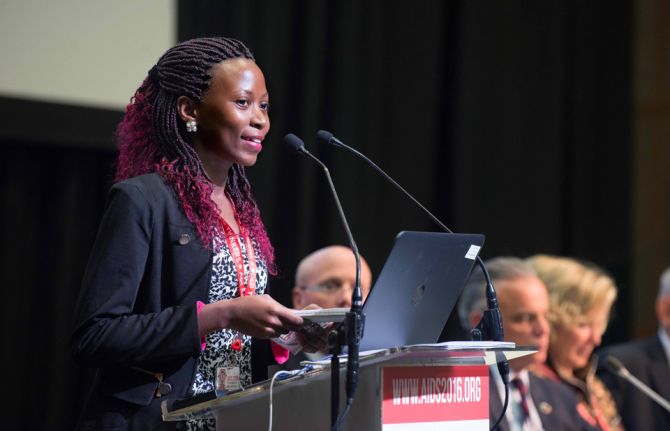
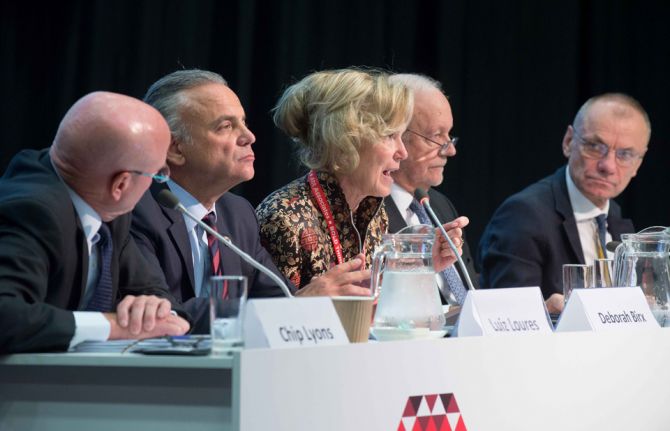
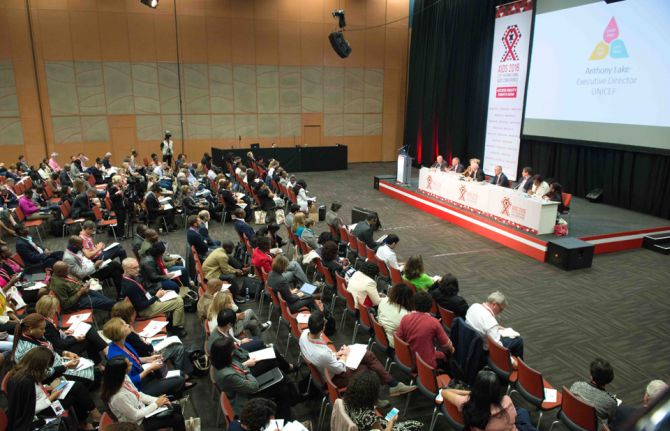
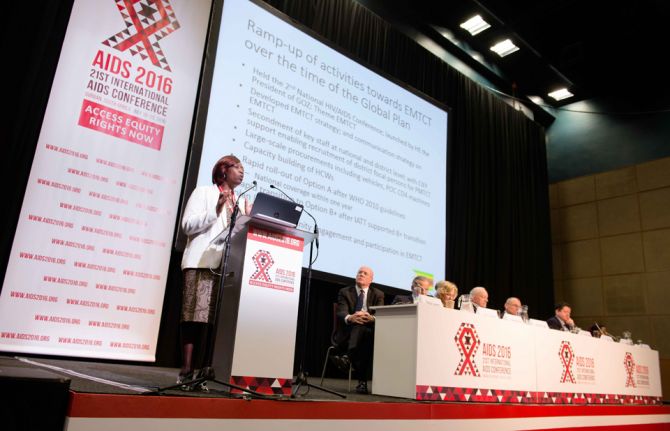
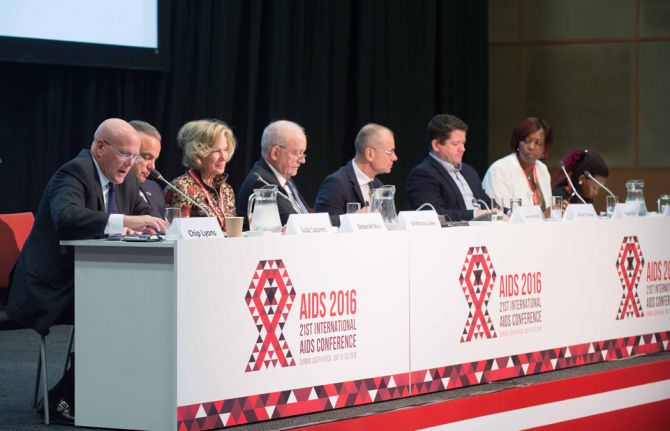
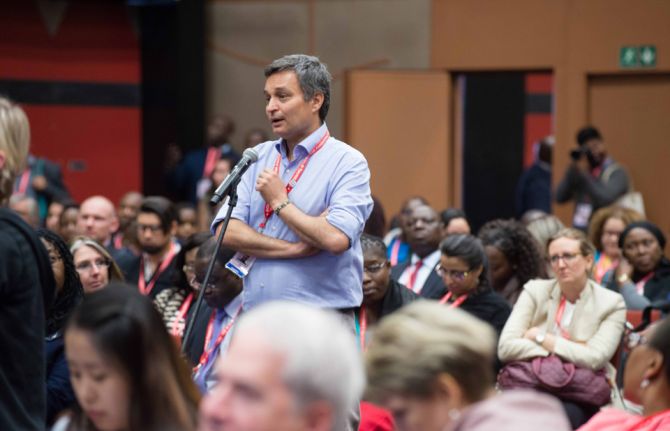
Update
Stopping new HIV infections among children and adolescents and providing treatment to women and children
20 July 2016
20 July 2016 20 July 2016At the 21st International AIDS Conference in Durban, South Africa, stakeholders came together on 18 July to forge ahead on the Start Free, Stay Free, AIDS Free initiative, which was launched at the United Nations General Assembly High-Level Meeting on Ending AIDS in June 2016. The initiative is designed as a follow-up to the remarkable success achieved by the Global Plan towards the elimination of new HIV infections among children by 2015 and keeping their mothers alive.
In a session entitled “Start Free, Stay Free, AIDS Free: finishing the job of the Global Plan,” stakeholders reviewed the progress made towards eliminating new HIV infections among children, as well as how to super Fast-Track access to paediatric treatment for mothers and children. The session was organized by a consortium comprising UNAIDS, the United States President’s Emergency Plan For AIDS Relief (PEPFAR), the United Nations Children’s Fund (UNICEF) and the World Health Organization (WHO).
The Start Free, Stay Free, AIDS Free framework provides a menu of policy and programmatic actions designed to enable countries and partners to close the remaining HIV prevention and treatment gap for children, adolescents, young women and expectant mothers. Stakeholders discussed how to build a concerted and coordinated country-led action that is backed by global support, so that countries can move quickly forward. The framework recognizes that every country needs a tailor-made acceleration and implementation plan. Each plan should respond to the country context, building on successful strategies for systems strengthening and identifying critical opportunities and actions that can expand access to life-saving HIV treatment and prevention services for all children, adolescents and young women as quickly as possible.
Participants at the session discussed the need to ensure that children are at the centre of an AIDS-free generation and examined the major barriers, gaps and opportunities to achieving this goal. The session also discussed the role of public–private partnerships and women living with HIV.
Speakers included the Executive Director of UNAIDS, Michel Sidibé, Deborah Birx, United States Global AIDS Coordinator and Special Representative for Global Health Diplomacy, Chip Lyons, Executive Director of the Elizabeth Glaser Pediatric AIDS Foundation, Anthony Lake, the Executive Director of UNICEF, and Gottfried Hirnschall of WHO. Speakers also included representatives of private sector organizations, such as the MAC AIDS Fund, Johnson & Johnson and Born Free.
The Start Free, Stay Free, AIDS Free framework establishes three blocks of programme activity that are closely interrelated and should move forwards together. The participants discussed how to ensure that the response takes into account the reality and variability of country, government and partner priorities, and how to create an implementation environment that optimizes partnerships. They discussed the role of accountability and measurement and mechanisms to ensure that countries get timely responses and support. To support implementation, the framework also calls on industry, civil society and international partners to focus on investing in and finding new, efficient and cost-effective solutions that simplify and innovate to maximize programme outcomes.
Quotes
“We must stop new HIV infections among children, ensure access to life-saving treatment for people living with HIV and halt the cycle of new infections among girls and young women—only then will we end paediatric AIDS.”
“We won't end AIDS as a public health crisis if we don't end AIDS in children first.”
“Next in our response to HIV is to break the chain of transmission throughout the life cycle ... from mother to child, to adolescent, to mother again. Through prevention and treatment at every point.”
Related

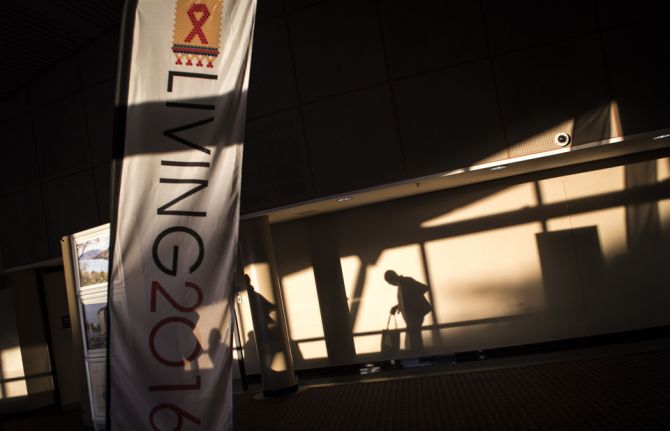
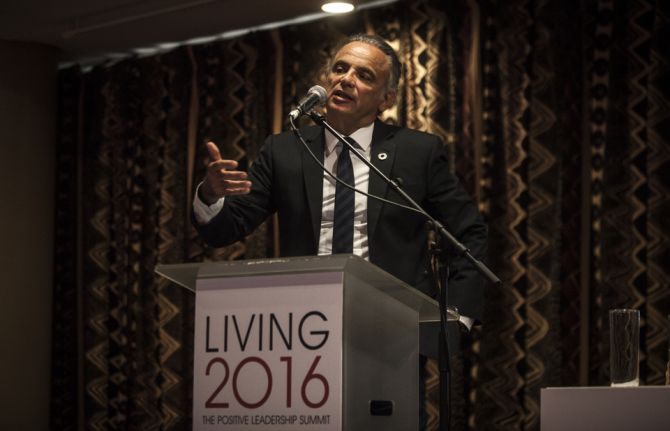
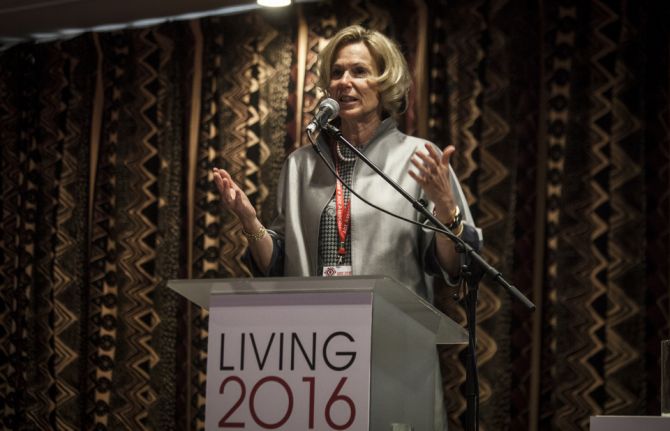
Update
Reaffirming the leadership of people living with HIV in the AIDS response
18 July 2016
18 July 2016 18 July 2016People living with HIV have been at the forefront of the AIDS response from the beginning, as equal partners providing solutions on how to provide services and demanding the respect and rights of everyone affected by HIV.
“LIVING 2016: positive leadership summit” saw 300 people living with HIV from all around the world gather together on 16 and 17 July in Durban, South Africa, ahead of the 21st International AIDS Conference.
The participants discussed the needs of people living with HIV and the community-led response to access to quality and rights-based services, stigma and discrimination, criminalization and violence, access to treatment and sexual and reproductive health and rights
The meeting reviewed the successes since AIDS 2000, held in Durban, but highlighted the remaining challenges: only half of people living with HIV have access to treatment, more than 1 million people living with HIV die every year, resources for the AIDS response are declining, stigma and discrimination remain barriers to access to services and inequities in access are costing lives.
The greater and meaningful involvement of people living with HIV was a cross-cutting theme throughout the two-day meeting.
The participants reaffirmed the diversity of people living with HIV and asserted the need to work together with networks of key populations as advocates to mobilize the resources for an effective AIDS response, to demand and support legal and policy reform that respect everyone’s rights and to hold governments, donors, the United Nations and networks of people living with HIV accountable.
Quotes
“We need people living with HIV back in the centre. That energy they brought at the beginning of the response got us the successes we had—we need you to bring it back to us now. Be proud of it, and count on us to back you up.”
“We not only need you, but we need you with us to make sure discrimination is not acceptable.”
“The injustices that were prevalent in 2000 are as equally prevalent now. People living with HIV need a positive revolution, one that makes sense and one that makes impact.”
“It’s critical that people living with HIV are there, that you raise your voice. We still have a long way to go: 17 million people on treatment is impressive, but we have 20 million more people to reach.”
“We are the experts. You need to get us involved. We are the people who effectively have the body of experience to help people access antiretroviral medicines and get through the stigma.”
“The reality is that we can’t get our governments to be accountable unless we stand in front of them and demand that accountability.”

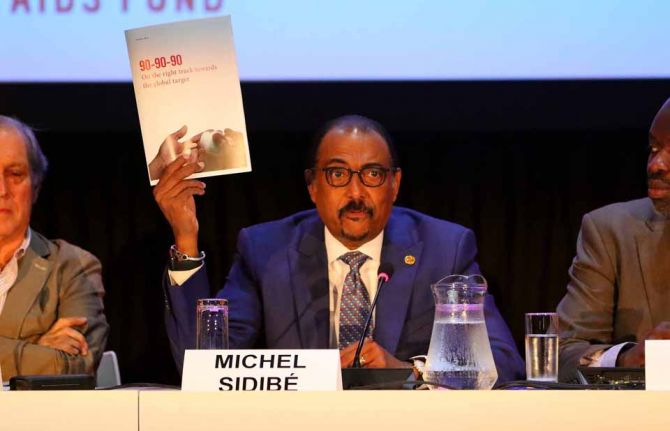
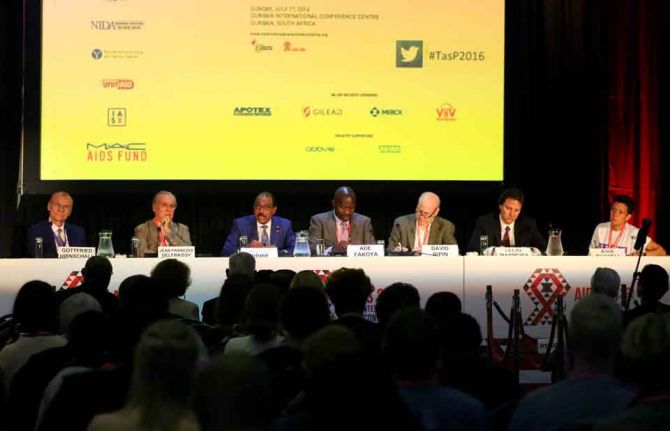
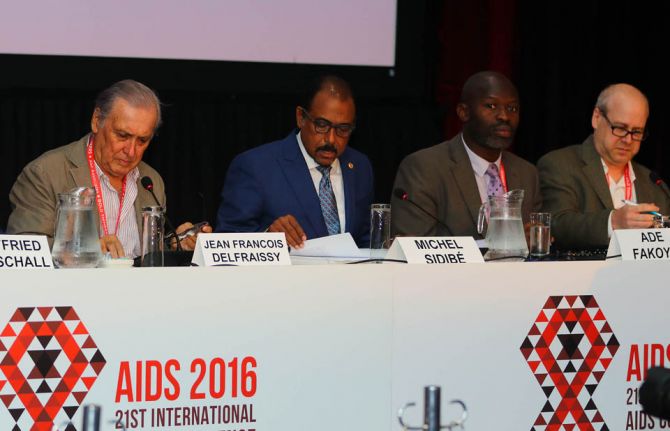
Update
Global gains made towards the 90–90–90 targets
18 July 2016
18 July 2016 18 July 2016Countries are making rapid progress in scaling up HIV testing and treatment across several regions, participants at an event entitled “90–90–90 target workshop: a vehicle for knowledge translation of treatment as prevention” heard.
Taking place at the 21st International AIDS Conference in Durban, South Africa, the event saw the launch of advance draft copies of a new UNAIDS report, 90–90–90: on the right track towards the treatment target. The report highlights best practices and provides examples of countries that are already coming close to achieving the 90–90–90 targets, which are that 90% of people living with HIV know their HIV status, 90% of people who know their HIV-positive status are accessing treatment and 90% of people on treatment have suppressed viral loads.
The meeting heard that in at least 10 countries from diverse regions, HIV treatment coverage either doubled or almost doubled from 2012 to 2015, reinforcing the feasibility of rapid scale-up. Especially encouraging is the rapid expansion of treatment services in certain fragile settings, such as the Democratic Republic of the Congo, where the proportion of people living with HIV receiving HIV treatment also doubled, from 16% to 33% between 2012 and 2015. These encouraging results from diverse countries provide credibility to the attainment of the 90-90-90 targets. However, challenges remain and many countries are struggling to achieve the third 90 target.
The report outlines steps that are needed to expedite gains towards each of the three 90s. Technological and service delivery innovations rapidly need to be brought to scale, communities must be empowered to lead the push to end the epidemic, new resources must be mobilized to reach the final mile of the response to HIV and steps must urgently be taken to eliminate social and structural barriers to service access.
Quotes
“The world is uniting around the Fast-Track response. The 90–90–90 targets have mobilized extraordinary global efforts and are achieving results. We have a fragile window of opportunity to achieve 90–90–90 by 2020 and lay the foundation to end the AIDS epidemic by 2030.”
“Long-term sustainable funding is critical to the success of 90–90–90. Investment of US$ 100 million in the Global Fund to Fight AIDS, Tuberculosis and Malaria saves 60 000 lives, prevents 3.4 million new infections, mobilizes US$ 300 million in domestic resources and saves US$ 2.2 billion in development gains.”
“Declining global investment in malaria led to a resurgence in the disease. The Fast-Track response will become a train wreck if sustainable financing is not secured for the HIV response.”
“The UNAIDS Prevention gap report shows that significant disparities and inequities persist in progress towards the 90–90–90 targets. Inadequate funding is at the core. The US$ 7 billion gap in investments needed for a comprehensive response to HIV is just a rounding error in the budgets of some of the larger donors. We have never had more powerful tools to achieve the end of the AIDS epidemic by 2020. Now is not the time to reduce investment.”
“Many people living with HIV here at AIDS 2016 are alive because of global solidarity behind treatment access at Durban AIDS 2000.”

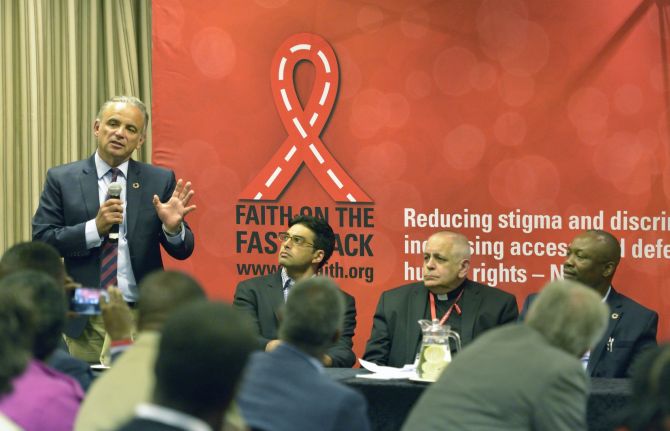
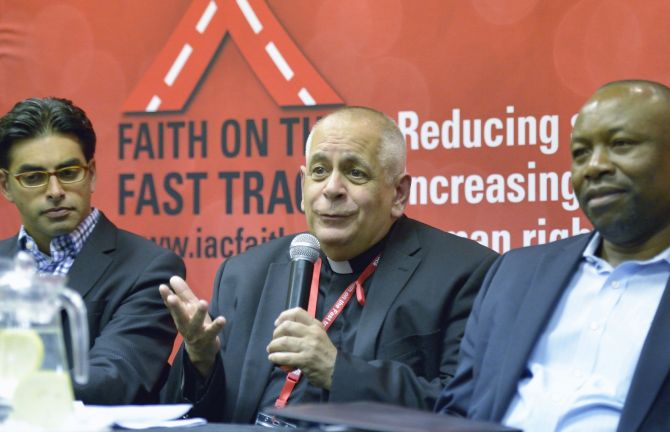
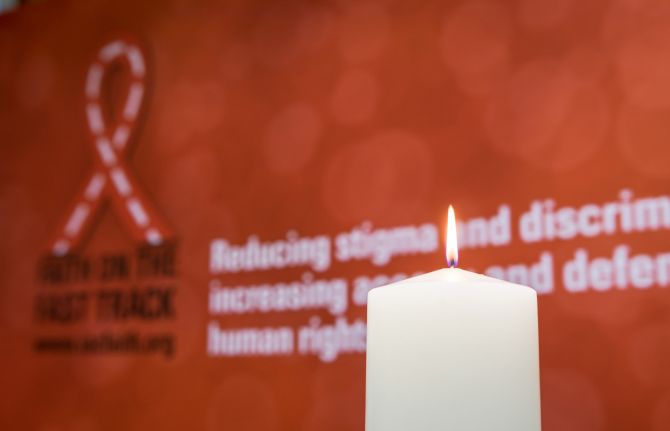
Update
Faith-based organizations and communities are central to the super Fast-Track response for children
17 July 2016
17 July 2016 17 July 2016The ambitious targets in the 2016 United Nations Political Declaration on Ending AIDS to treat children living with HIV and eliminate new HIV infections among children and adolescents need urgent and concerted efforts. Faith-based organizations and community efforts will be central to the response.
More than 250 people have participated in two faith-based organization preconference sessions in advance of the 21st International AIDS Conference, which will take place in Durban, South Africa, from 18 to 22 July.
Luiz Loures, UNAIDS Deputy Executive Director, Deborah Birx, United States Global AIDS Coordinator and Special Representative for Global Health Diplomacy, and Anil Soni, Vice-President of the pharmaceutical company Mylan, joined representatives of faith-based organizations to galvanize joint action and develop more timely and effective responses to the needs of children.
Speakers highlighted the planned implementation of the super Fast-Track response for children through faith-based organizations, which have extensive health and support networks, in particular among hard-to-reach populations. The super Fast-Track response aims to ensure healthy and productive lives for children living with HIV through access to child-friendly diagnostic tools and antiretroviral medicines.
Quotes
“By 2020–2030 we will have 100% more young people and adolescents than we had in 1990–2000. This is the group that is now at risk. We will invest in programmes to ensure that adolescents receive the information they need to remain HIV free.”
“More lives are being saved today than ever before. However, there is still a lot of work to be done. More than ever we need the experience of the faith-based organizations.”
“There has to be commitment to develop the very specific treatments and medications needed by children living with HIV. Treatment providers and industry can come together to identify shared solutions.”
“The Catholic Relief Services AIDS programme has strengthened human resource capacity to over 30 000 staff, built staff capacity in data collection to provide accurate data and mobilized communities to improve adherence.”
Related

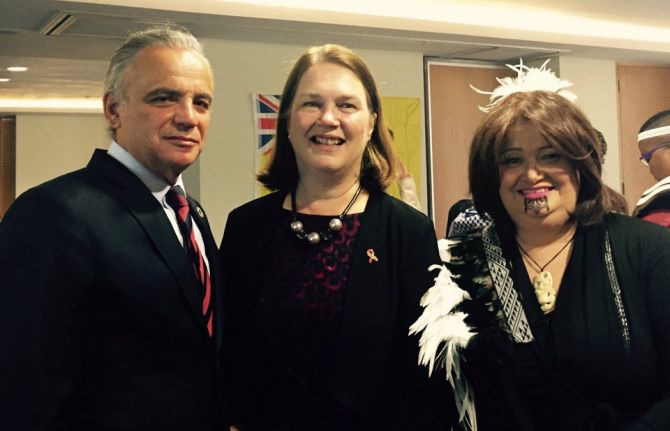
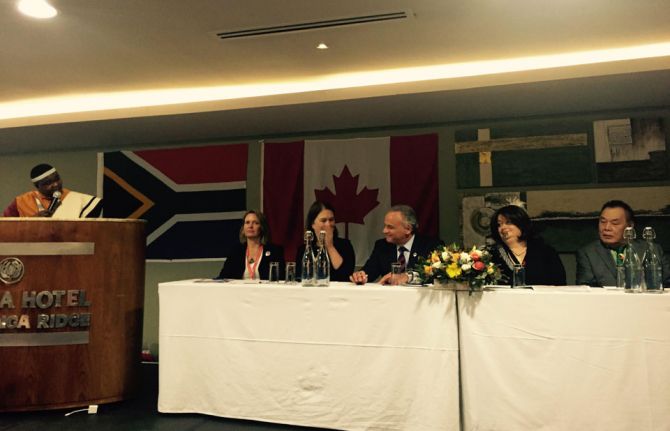

Update
International indigenous preconference meeting on HIV calls for greater visibility of indigenous voices
16 July 2016
16 July 2016 16 July 2016More than 150 representatives of indigenous people and allies are coming together on 16 and 17 July in Durban, South Africa, for the International Indigenous Pre-Conference on HIV & AIDS, which was organized by the International Indigenous Working Group on HIV & AIDS.
A preconference meeting to the 21st International AIDS Conference, the event is a forum to share promising practices, share lessons learned and build relationships across continents, cultures, traditions and languages. It provides a place where indigenous people can overcome challenges and chart the growth of an indigenous-led HIV response in Africa.
The programme includes keynote addresses reflecting a broad spectrum of issues and expertise and abstract-driven sessions under several tracks: traditional medicine, care, treatment, support and prevention; indigenous identities, world views and HIV; the meaningful engagement of women and girls; and leadership, advocacy and policy for addressing the social and structural drivers of HIV.
Quotes
“The Sustainable Development Goals are about tackling exclusion. Indigenous communities need to be at the centre of efforts to end the AIDS epidemic. The 2016 United Nations Political Declaration on Ending AIDS calls for eliminating the barriers that indigenous people encounter, including stigma and discrimination in health-care sessions, and for increased and sustained investment in community-led service delivery and advocacy. The time to act is now.”
“Indigenous people continue to be disproportionately affected by HIV. There will be no ending AIDS without dignity, social justice and human rights of indigenous people, and without their leadership. In our Canadian health-care system we must have zero tolerance for discrimination that some indigenous people continue to face when seeking health care. We are here to share wise practices that have worked around the word and to call for respect, dignity and compassion in provision of health services.”
“Partners must include indigenous peoples in the planning of culturally sensitive programmes and services.”
“We need to keep leaders accountable for their commitments to address HIV and indigenous people, but not with rhetoric, rather with real financial, epidemiological, and global collaborations allowing us to be part of the solution.”
Related

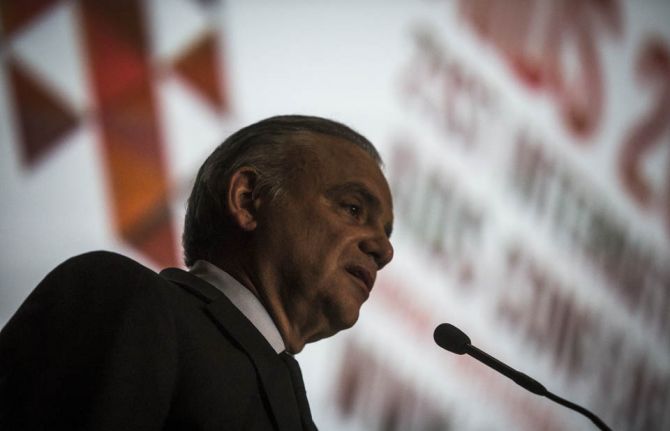

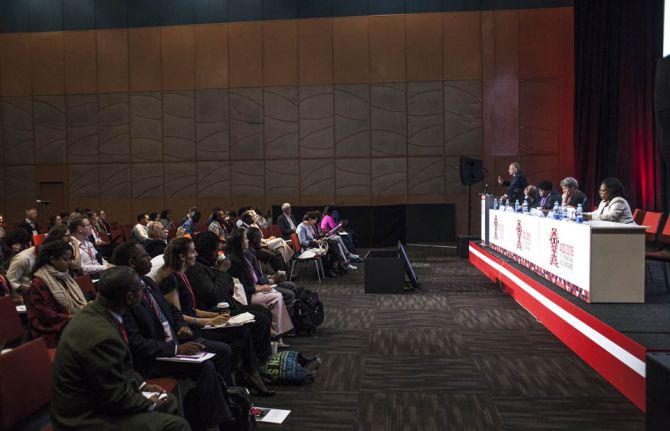
Update
Male involvement for better access and equity in the HIV response
19 July 2016
19 July 2016 19 July 2016Gender inequalities and gender-based violence worsen the vulnerability of women and girls to HIV and other sexual and reproductive ill-health outcomes. Yet, men and boys are also affected by the HIV epidemic as a result of harmful gender norms and inadequate health systems to respond to the needs of men.
Men are less likely to access HIV testing, are often less likely to seek, use and adhere to antiretroviral therapy and tend to have a lower CD4 count at treatment initiation. Men are also more likely to die while on antiretroviral therapy.
During a session in Durban, South Africa, at the 21st International AIDS Conference, participants shared experiences from HIV programmes that have successfully employed male engagement as a strategy. They stressed the importance of an enabling policy environment that promotes inclusive and equitable health service delivery models. They agreed that the way forward to overcome obstacles is to engage leaders and stakeholders at the community and government levels to challenge harmful gender norms that impede gender equality and uptake of HIV services for all.
At the event, UNAIDS Deputy Executive Director Luiz Loures launched the Platform for Male Engagement in the HIV Response, which is the culmination of a broad global consultation convened by UNAIDS, the International Planned Parenthood Federation and Sonke Gender Justice with governments, civil society and United Nations and development partners. It will provide guidance on how to engage men and boys in the gender equality movement and to improve their access to, and utilization of, HIV and other health services for their own health needs and broader health and development.
Quotes
“There is no biomedical science that will advance human rights and gender equality.”
“Men's low health-seeking behaviour is a public health threat.”
“We are all responsible for protecting young women and adolescent girls from HIV, from policy-makers to community leaders. We need to identify men as role models to mentor young men.”
“We need to have open conversations about sexual and reproductive health and rights with religious and community leaders and to scale up community programmes to address gender inequality and gender-based violence.”

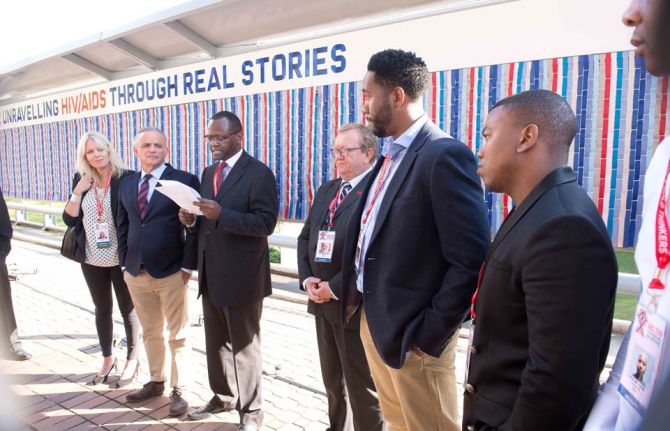

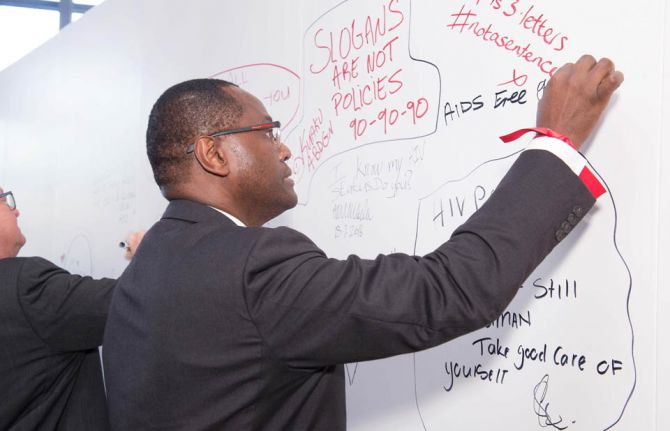
Update
UNAIDS and Anglo American team up to promote HIV testing
18 July 2016
18 July 2016 18 July 2016UNAIDS and Anglo American, one of the world’s leading mining companies, have joined together to support ProTest HIV, a global initiative that encourages people to get tested for HIV.
The partnership was announced in Durban, South Africa, at the 21st International AIDS Conference. It promotes the importance of voluntary HIV testing, care and support for people living with HIV and broader HIV prevention programmes.
Anglo American has been involved in the response to HIV for 30 years, during which it has worked to reduce the impact of the HIV on its employees, their families and the communities in which the company operates. The company’s HIV policy is based on a human rights framework and conforms to the internationally recognized best practices recommended by UNAIDS. Anglo American aims to ensure that all employees know their HIV status and offers free testing, counselling and antiretroviral therapy to all employees and their dependants.
Ahead of the conference, UNAIDS and Anglo American asked people to spread the word about the campaign by uploading a selfie using the hashtags #ProTESTHIV and #GenEndIt on to their social media channels, which will automatically drive traffic to the protesthiv.org website.
Ending AIDS by 2030 will only be achieved by working together. This partnership demonstrates the power of collective action in mobilizing people around the world.
Quotes
“UNAIDS values the important role that business can play in raising awareness through targeted campaigns and in creating a healthier labour force by encouraging employees to know their HIV status and access HIV prevention, treatment and care services.”
“Our partnership with UNAIDS highlights the kind of collaborative work needed to see the first HIV-free generation. At Anglo American, we aim to be partners in the future with our host countries and communities, through both operating excellence and directing our efforts where they will have the most sustainably positive impact. The health of our employees is of course one such area. I’m proud of the results of our steadfast support of HIV awareness, testing and treatment of 30 years. More multistakeholder efforts like this campaign will help us all meet the global goal of ending AIDS by 2030.”

